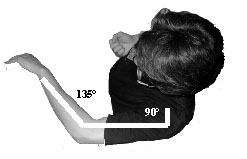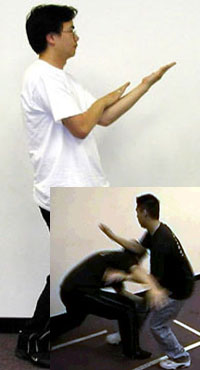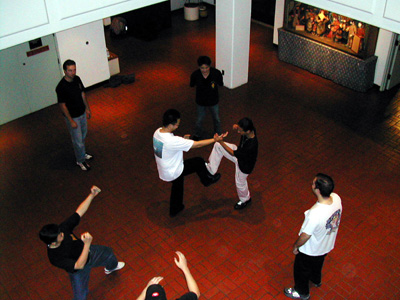Our Approach to Learning
As the name implies, East-West Wing Chun combines characteristics of traditional Asian fighting theories with Western methodologies toward training them. The Four Pillars of the approach include:
1. Synthesis of Traditional and Modern Training Methods

In discussing bong sao structure, we emphasize knowledge of muscle groups, alignment of bones, and angles of redirection
However, true to Sifu Lo's history of innovating training methods, our classical foundation is just a starting point to explore the Wing Chun system. In addition to adhering to classical approaches, we also embrace modern ways of training and conditioning. The goal is to produce practitioners who have a firm understanding of both traditional fighting theory and applied biomechanics.
2. Interpretation of Classical Principles to Apply to Modern Combat

The creators of Wing Chun probably did not face double-leg takedowns very often. However, the lift-sink idea from Chum Kiu and butterfly sword footwork provide strategies for coping with this particular attack
Abiding by the Art of War's idea of "knowing your enemy," we also learn the basics of other modern fighting systems such as Boxing, Thai Boxing, and Wrestling. By knowing these principles, we gain a broader idea of how Wing Chun works as a complete system. By being able to "feed" their attacks, we provide a more realistic means of testing our Wing Chun skills.
3. Flexibility, Experimentation, Experiential Learning

The Circle Drill allows the student to experiment with various techniques, to see what works for him
East-West Wing Chun relies on individual experimentation as we provide a framework for students to experience different types of fighting methods. It embraces flexibility in application and encourages free thinking and interpretation.
4. Attitude toward Training
Given the other three pillars of the East-West Wing Chun system, an open-minded approach to training is essential. We assume that nobody has all the answers for all people and situations. But through collective critical thinking, using Wing Chun principles as our guidelines, we can come up with potential solutions and test them through practice.We encourage a relatively flat hierarchy, where our instructors are respected for their experience, aptitude for applying Wing Chun, and ability to transform questions into individual training methods. But no method or instructor is beyond respectful questioning.
All members of all levels of our approach are appreciated for what they bring to the table: personal experience. Other martial arts are respected for the questions they pose to our system.
